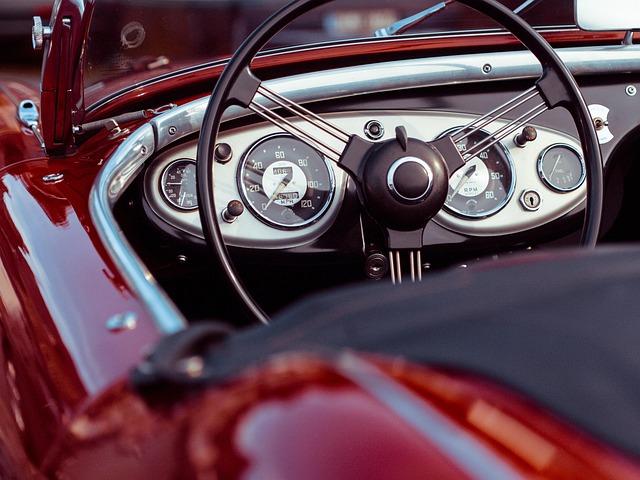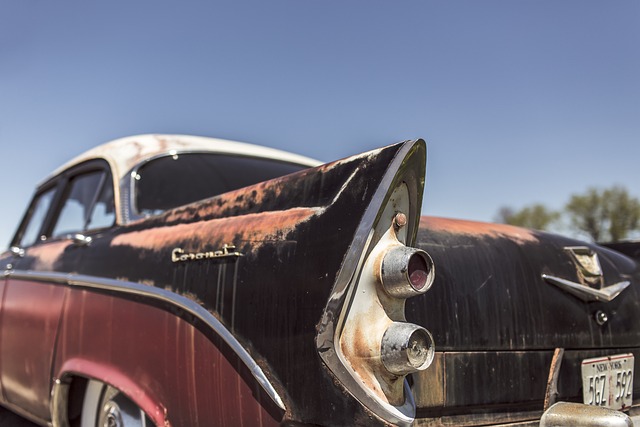Vin verification is essential for authenticating classic cars. A VIN verifier uses official databases and advanced tools to cross-reference a vehicle's VIN with its history, detecting any tampering or discrepancies. This process involves visual inspections and online checks against industry standards, ensuring buyers and sellers trust in the market. Skilled VIN inspectors are vital for rare or custom classics, maintaining integrity and addressing regulatory updates.
“Uncover the secrets of classic car ownership with our expert guide to VIN verification. Understanding the Vehicle Identification Number (VIN) is crucial for authenticating these timeless vehicles. Learn how a qualified VIN verifier utilizes specialized tools and knowledge to ensure a car’s history and integrity. From initial inspection tips to navigating common challenges, this comprehensive guide covers everything you need to know about VIN verification. Discover the steps to verify a VIN number with precision and find reliable VIN inspection services near you.”
- Understanding VIN Verification: The Foundation of Classic Car Authenticity
- The Role of a VIN Verifier: Expertise and Tools for Accurate Checks
- Step-by-Step Guide to Conducting a VIN Inspection
- Common Challenges in VIN Verification and How to Overcome Them
Understanding VIN Verification: The Foundation of Classic Car Authenticity

Understanding VIN Verification: The Foundation of Classic Car Authenticity
VIN (Vehicle Identification Number) verification is a crucial process in establishing the authenticity and history of classic cars. It serves as a unique fingerprint, providing vital information about the vehicle’s past, including its original manufacturer, model year, and assembly location. A reliable vin verifier or inspector plays a critical role in ensuring that the car you’re considering is indeed a genuine vintage piece. By cross-referencing the provided VIN with reputable databases, such as those maintained by the DMV (Department of Motor Vehicles), experts can verify that the vehicle’s identity is accurate and hasn’t been tampered with or altered over time.
This meticulous process is essential for classic car enthusiasts and collectors to make informed decisions. A vin number verification ensures that you’re purchasing or owning a true classic, not a replica or a car with a fabricated history. Moreover, it offers peace of mind by safeguarding against potential frauds and scams in the market, where forged documents might try to pass off a regular vehicle as an antique. Therefore, for anyone delving into the world of classic cars, understanding the significance of vin verification is paramount, whether you’re looking to purchase, restore, or simply appreciate these timeless automotive treasures.
The Role of a VIN Verifier: Expertise and Tools for Accurate Checks

A VIN verifier plays a pivotal role in ensuring the authenticity and integrity of classic cars. With their expertise and specialized tools, they can conduct thorough VIN number verifications that go beyond what’s possible with basic DMV checks. These professionals inspect key components like the frame, engine, and body panels to cross-reference with the vehicle identification number, exposing potential discrepancies or tampering.
Vin inspectors utilize advanced diagnostic software, scan tools, and industry knowledge to detect signs of accidents, repairs, or unauthorized modifications. They can also compare the VIN data against historical records, recall information, and known issues within specific car models. This level of scrutiny is crucial for classic car enthusiasts and collectors to make informed decisions, ensuring they purchase a genuine, well-maintained vehicle that matches its documented history.
Step-by-Step Guide to Conducting a VIN Inspection

Conducting a thorough VIN (Vehicle Identification Number) inspection is a crucial step in ensuring the authenticity and history of a classic car. Here’s a step-by-step guide to help both professional vin inspectors and enthusiasts perform this vital task. Begin by examining the vehicle visually for any signs of tampering or damage, focusing on areas like welds, paint jobs, and seals that might indicate alterations to the VIN. Next, locate the VIN plate—usually found on the driver’s side of the vehicle—and carefully inspect its content. Compare the figures and letters with industry standards and cross-reference them using reliable online databases or tools provided by recognized vin verifiers.
If discrepancies arise during manual verification, consult official records at a local DMV (Department of Motor Vehicles) to cross-check the VIN number. Use services specifically designed for this purpose to ensure accuracy, as even the slightest deviation could signal potential fraud. Remember, a vin inspector’s keen eye and meticulous record-keeping are paramount in navigating the complex process of VIN verification, ultimately ensuring that both classic car buyers and sellers can trust the authenticity of each vehicle they encounter.
Common Challenges in VIN Verification and How to Overcome Them

The process of VIN (Vehicle Identification Number) verification is crucial for classic car enthusiasts and professionals alike to ensure authenticity and peace of mind. However, it’s not without its challenges. One common hurdle is the age-related deterioration of records and physical components, especially in older vehicles. Overcoming this requires meticulous record-keeping by owners and a thorough inspection by experts who understand vintage cars. They employ specialized tools and knowledge to cross-reference data from various sources, ensuring accuracy despite potential discrepancies.
Another challenge lies in obtaining precise information for rare or custom-built classics. In such cases, traditional vin verification methods might not yield complete results. Here, the expertise of a vin inspector is invaluable. They can consult with specialists, delve into manufacturer archives (if available), and use advanced vin verifiers to unearth hidden details. Additionally, staying updated on industry standards and regulations ensures that any potential issues are addressed promptly, maintaining the integrity of the verification process for both classic car buyers and sellers.
When it comes to classic cars, accurate VIN verification is key to ensuring authenticity and peace of mind. By following the step-by-step guide and leveraging the expertise of a qualified VIN verifier or inspector, car enthusiasts can navigate the process with confidence. Remember, a properly conducted VIN inspection is not just a check but an investment in the longevity and value of your classic vehicle. So, whether you’re a seasoned collector or a newcomer to this captivating hobby, embracing these expert tips will help you maintain the integrity of your VIN-verified masterpiece.
